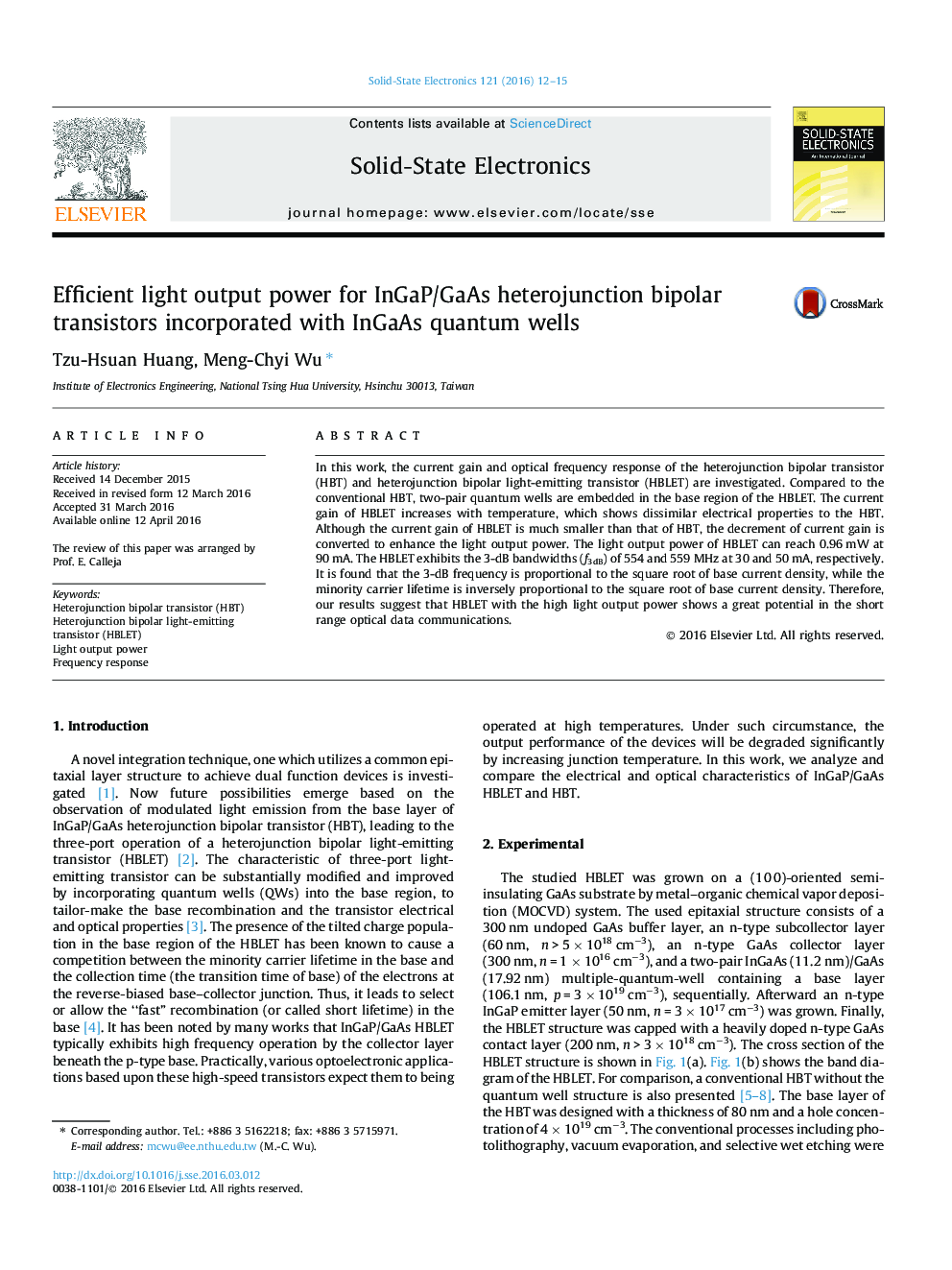| Article ID | Journal | Published Year | Pages | File Type |
|---|---|---|---|---|
| 752539 | Solid-State Electronics | 2016 | 4 Pages |
•This work mainly focused on the current gain and optical response for HBLET and HBT.•The HBLET shows a great potential in the short range optical data communications.•The light output power of HBLET can reach 0.96 mW at 90 mA.•The HBLET exhibits the 3-dB bandwidths (f3dB) of 554 and 559 MHz at 30 and 50 mA.
In this work, the current gain and optical frequency response of the heterojunction bipolar transistor (HBT) and heterojunction bipolar light-emitting transistor (HBLET) are investigated. Compared to the conventional HBT, two-pair quantum wells are embedded in the base region of the HBLET. The current gain of HBLET increases with temperature, which shows dissimilar electrical properties to the HBT. Although the current gain of HBLET is much smaller than that of HBT, the decrement of current gain is converted to enhance the light output power. The light output power of HBLET can reach 0.96 mW at 90 mA. The HBLET exhibits the 3-dB bandwidths (f3dB) of 554 and 559 MHz at 30 and 50 mA, respectively. It is found that the 3-dB frequency is proportional to the square root of base current density, while the minority carrier lifetime is inversely proportional to the square root of base current density. Therefore, our results suggest that HBLET with the high light output power shows a great potential in the short range optical data communications.
